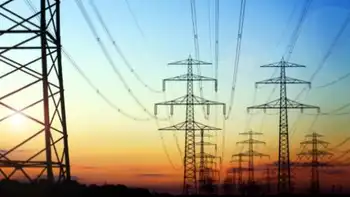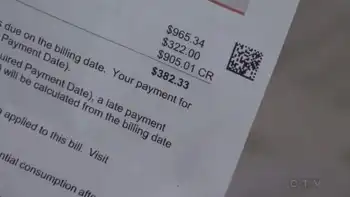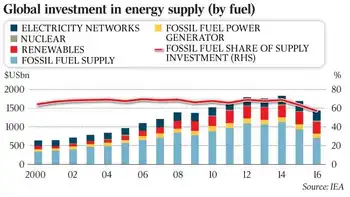TechÂ’s holy grail: a better-built battery
- Your laptop computer runs 30 times faster than it did a decade ago. Your cell phone is as powerful as your home PC used to be. Your iPod holds 32 times as much music for about half the price as the original.
Too bad they all use the same old battery technology.
Despite huge advances in portable electronics over the years, their main source of power — the humble battery — hasn't changed much since 1899 when Waldmar Jungner invented the first nickel-cadmium rechargeable cell, the genesis of today's rechargeable battery.
"The transistor was born in 1947. Batteries have been around two centuries," said Ross Dueber, CEO of Camarillo, Calif.-basedZPower, which is working on a new type of laptop battery. "We (battery makers) had our big advances a century ago."
But a bunch of companies are charged up about changing that. Demand for portable electronics such as the iPhone coupled with a push toward green energy is sparking new interest in centuries-old battery technology.
Electric cars, solar panels and wind-power turbines all need to store power in the interval between power being generated and used.
"People aren't going to spend billions to get a few more hours out of a laptop," said Rick Zarr, chief technologist for National Semiconductor's (NSM) PowerWise Solutions unit, which sells power-efficient electronics. "But when you come to something like an electric car — where you need to drive 400 miles on a charge — then you have a new paradigm."
In June, Republican presidential candidate John McCain proposed a $300 million prize for anyone who can develop a better battery for hybrid and electric cars.
The bounty won't jump-start battery innovation, Dueber says. But he says he's encouraged that battery technology is drawing the attention of Washington.
Unlike computer chips, which improve as engineers find ways to fit them with more transistors and better designs, batteries are subject to the hard limits of chemistry.
Batteries work as a controlled chemical reaction inside a series of individual cells. Each cell contains two chemicals separated by an electrolyte. When the chemicals come into contact with each other via a completed circuit, the positive active chemical oxidizes, throwing off electrons, while the negative chemical is reduced, consuming electrons through the circuit.
Rechargeable batteries — the kind used in everything from iPods to hybrid cars — reverse this chemical process when a current is applied.
The laws of physics limit how much energy a chemical reaction can produce. So battery makers hoping to squeeze more power from the same-sized battery have to find new chemical combinations that are cheap to produce, can be recharged safely and that retain their power storage capacity over many recharging cycles.
That's why battery technology "moves at a glacial pace," said Dan Squiller, CEO of battery startupPowerGenix.
"You're dealing with the periodic table," he said. "You don't have as many degrees of freedom as you do when you're designing circuitry."
Batteries also take longer to test. Unlike chip designs, which can run near-instant simulations of their performance, new battery technology requires repeated charges and discharges to test how durable and stable the battery is over time.
And whatever modest improvements battery makers have managed to eke out have been quickly swallowed up by the demands of power-hungry gadgetry.
That point became clear earlier this year when Apple (AAPL) released the newest version of its iPhone with faster data, built-in GPS — and a shorter battery life. The original iPhone gave users eight hours of talk time and six hours of Internet use between battery recharges, while the new one gives five hours talk and five hours Internet, though on the faster 3G network.
"Think about all the things you can do with your laptop that you weren't able to do 10 years ago," said Joe DeCarlo, director of new business development and national OEM sales for Sanyo Energy, the battery-making unit of Japan'sSanyo Electric. "We've increased the capacity of the (laptop battery) cell by about 120%. But laptops have so much more power that they're using it all up."
Until the technology improves, electronics companies have two choices: use a bigger battery or find ways to make more efficient use of the existing battery. Most laptop makers are using a mix of both approaches.
Hewlett-Packard (HPQ) says its newly introduced EliteBook 6930p can run up to 24 hours on a single charge — when equipped with a 1.77-pound battery, which would make the device 37% heavier.
Dell's (DELL) E6400 promises 19 hours of battery life with a standard battery plus an optional nine-hour battery.
At the same time, most computer makers have taken lots of small steps to make their products more energy efficient.
Chips from Intel (INTC) and Advanced Micro Devices (AMD) adjust speeds on the fly when the computer doesn't need full-power processing. Monitors use efficient light-emitting diode backlights instead of traditional fluorescent tubing.
But there are only so many ways to boost efficiency — and only so much weight consumers are willing to lug around. That's why the industry needs a technology breakthrough, not just stop-gap measures, observers say.
"We've reached the limits of the traditional approaches," said Scott Faris, CEO of Orlando, Fla.-basedPlanar Energy Devices. The company is using nanotechnology to develop what it says will be a safer, longer-lasting battery hardy enough to hard-wire into the electronics it powers.
"The battery market needs a revolution, not an evolution," he said.
ZPower aims to boost battery life with a line of laptop batteries that uses a silver-zinc compound rather than today's lithium-ion. CEO Dueber says its batteries can store twice as much power in the same space. It's also safer and more easily recycled, Dueber says.
Fuel cells are another promising technology. Using a liquid chemical reaction such as hydrogen and oxygen to release energy, fuel cells promise to keep laptops and other devices running for days — if they can be made safe.
Still, while PC and peripheral makers have been touting the potential benefits of fuel cells for years, none has reached store shelves in large numbers.
The volatile nature of the chemicals used in fuel cells make them harder to manufacture in volume.
Even tiny defects in manufacturing can make them unsafe, says Roy Davis, a spokesman for the Automotive Products Group of chipmaker Fairchild Semiconductor.
"That's only going to get worse as you go to higher and higher power levels," he said.
Related News

B.C. politicians must focus more on phasing out fossil fuels, report says
VANCOUVER - Politicians in British Columbia aren't focused enough on phasing out fossil fuel industries, a new report says.
The report, authored by the left-leaning Canadian Centre for Policy Alternatives, says the province must move away from fossil fuel industries by mid-century in order to meet its climate targets, but adds that the B.C. government is ill prepared to transition to a green economy.
"We are totally moving in the wrong direction," said economist Marc Lee, one of the authors of the report, on The Early Edition Wednesday.
He said most of the emphasis of B.C. government policy has been on slowing reductions…




